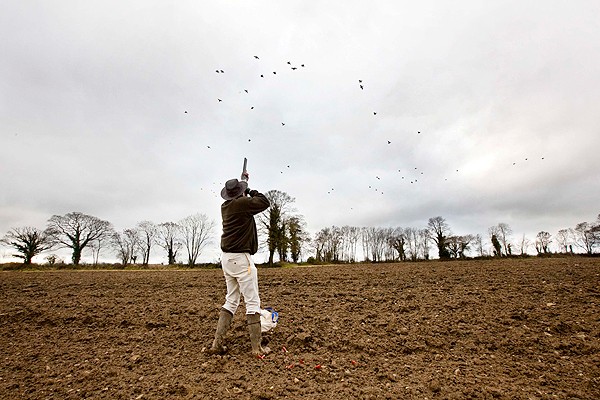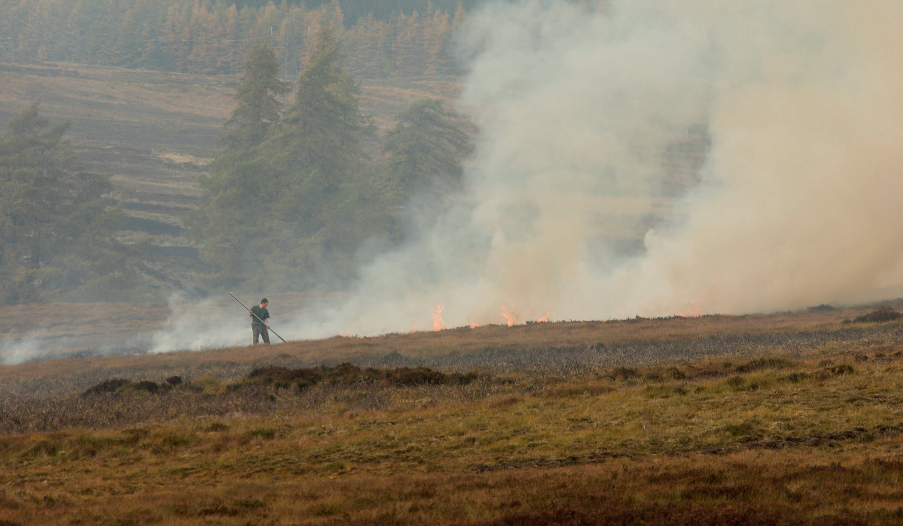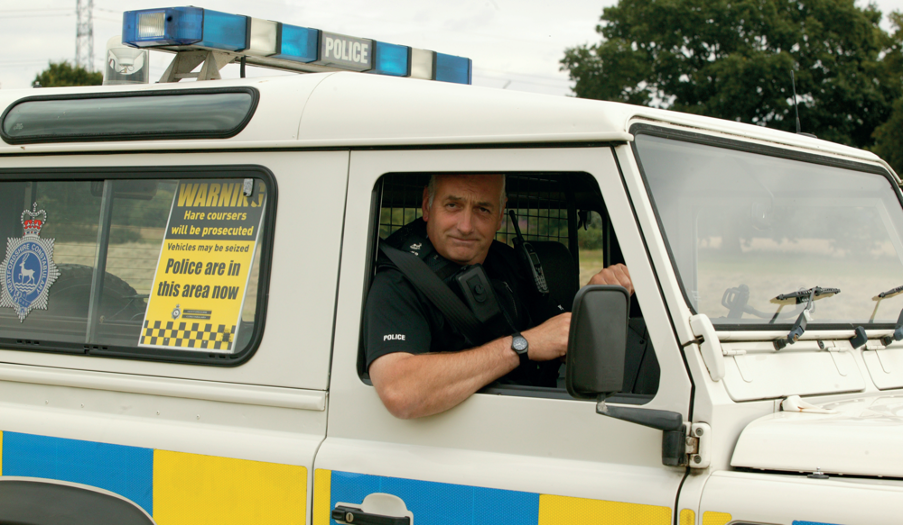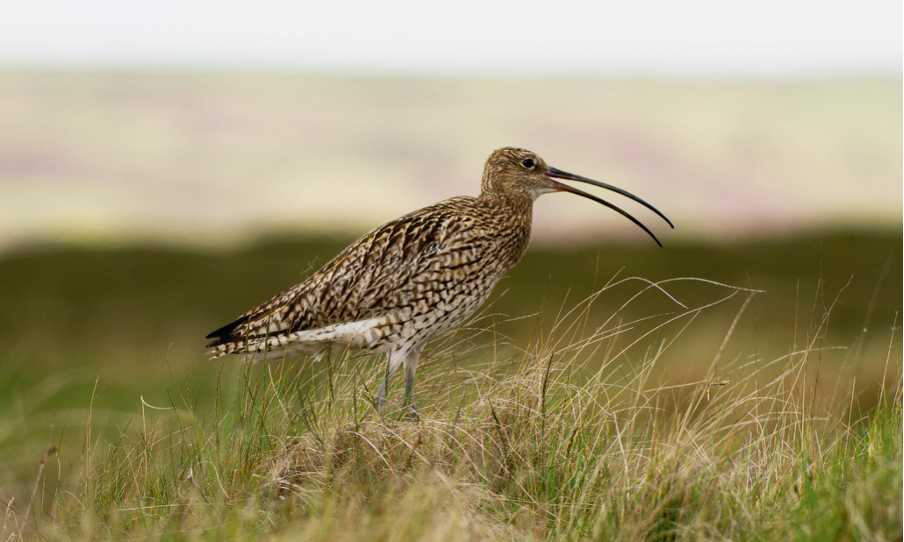News
Mallard at Mocklerstown shoot
For the duck it's a long way up in Tipperary thanks to newly built wetlands and masterly presentation
Would you like to appear on our site? We offer sponsored articles and advertising to put you in front of our readers. Find out more.
For the first drive, the nine Guns walked out through the garden of Mocklerstown House, a stylish white building on top of a gentle hill, and down across a grass field towards a line of poplars with a lake behind them. In my ignorance, I assumed that duck would be driven off the water and come over us once or twice before departing elsewhere or, even worse, dropping back in.
Not at all. We lined out facing the opposite direction with our backs to the lake. The gamekeeper sounded his horn and for a few minutes we waited expectantly. Then little dots appeared in the sky over the top of the hill, way beyond the house. At first I took them for larks or possibly fieldfares, as they looked so small, but they steadily resolved into squadrons of mallard, travelling high and fast towards us. Some came from the right, some from the left, others from straight ahead, creating a mix of angles across a wide front.
Suddenly we were in action, leaving the low birds alone as instructed but loading as fast as we could and taking on whatever seemed possible. Some of the duck were definitely out of shot, some at the limit of possibility, but impressively high birds were crumpling all along the line. Behind us an efficient team of pickers-up with excellent dogs (mainly black Labradors) collected any pricked birds and that first drive alone yielded 70 mallard.
Water of life
The Mocklerstown shoot, near Clonmel, in South Tipperary, is like no other that I have seen. It is the creation of the landowner, Louis Ronan, with the help of retired dentist and fieldsports enthusiast Peter Fletcher, and Jim Kelleher, a farmer from County Clare. Louis decided to add to the dew ponds on his 900-acre estate by creating several small lakes and putting in a borehole to ensure a continuous supply of fresh water.
The success of the enterprise has been phenomenal. On shooting days last season the bag was often 300 or so high-quality birds. The operation is partly commercial in that days are let to individuals and groups (last season at 37 per bird), but the aim is not to make money, rather to break even and to provide Louis and his friends with good sport.
On the day I shot there, everything was provided by our generous host. It was his day and guests were not allowed to tip the keeper or to pay for cartridges. As I shoot off my left shoulder, I would have liked to take my own side-by-side 12-bore across the water, but that would have cost nearly £100 for air freight and a Euro gun-pass, so I gratefully accepted the offer of a loan from Jim Kelleher, who lent me his beautiful Beretta over-and-under with a left-handed cast.
A well-controlled second drive
By Tipperary standards the day was fine, with light cloud cover, but no rain. The second drive, Hennessys, to which we travelled in 4x4s, was even more spectacular than the first. Again we lined out across a grass field, but this time the skyline ahead of us gorse bushes scattered along the top of a low, rounded hill was at least half a mile away and it was clear that the duck would come from somewhere beyond it. On our right, the huge, conical bulk of Slievenamon (the mountain of women) commanded the south- eastern horizon.
Another long blast on the horn from the keeper and a radio command to his beaters, who were way out of earshot, set things going. Soon swarms of black dots began rising into the sky beyond the gorse. One or two peeled away to the flanks, but most of them gained height and came speeding towards us in loose formations of 10, 20, sometimes even 50, yet never in one enormous flush.
Once again the presentation was masterly and many highly impressive shots were taken. This was hardly surprising considering that in the line were men such as Sean Donnelly, former coach of the Irish Olympic clay pigeon team, who now imports leather goods, and Louis Ronans brother David, who runs the estates large-scale pig farm. Other notable performers were the four members of the Kavanagh family, from County Wicklow. Young Ben Kavanagh was outstanding in his shooting.
The lap of luxury
After the second drive, everyone retired to the Meal House for refreshments. Once a barn in which meal was mixed, it has been converted into a smart clubhouse. On the ground floor is a comfortable bar with leather-covered armchairs and sofas grouped around a roaring fire, and braces of stuffed gamebirds decorate the walls. There is a huge, airy dining room upstairs with space for 20 or more people at a central table. Hot sausages and deliciously strong, dark soup set the conversation going, with several Guns maintaining that it was impossible to kill high duck out in front.
Youll not kill them ahead of you, said one of the Guns.
You have to wait until theyre right overhead. Jim Kelleher agreed, adding, unless you put plenty of lead up, nothings going to loaded with 32g of powder and No 5 shot, and they were certainly effective if I got my swing right.
The duck are going much faster than you think, said Tony Keane, who works as a private shooting instructor and was advising another of the Guns, Tony OReilly. You need to see 4ft of clear air ahead of the target. His advice was spot on and whenever I managed to get that picture, I hit the target.
The talk turned to the subject of the Gun Clubs, which have most of the shooting in the Irish Republic. Large private estates such as Mocklerstown are rare and the majority of the countryside is the preserve of clubs. Based in small towns and villages, they guard their own territories zealously and obey their own rules for instance, that nobody shoots hen pheasants or hares.
An English Keeper
Back out in the rolling landscape it was clear that a great deal depended on the skill with which the cheerful English keeper, Julian Clements, and his two underkeepers, Christopher Langhorne from Scotland and John Wilson from England, had set things up. Julian came over to Ireland in May 2007, having worked on several estates in England, and is now settled in a house with his wife and two children. He was surprised to find that the majority of keepers in Ireland are English. One of the Guns remarked, Thats because the English are gamekeepers by nature and the Irish are poachers by nature.
The three Mocklerstown keepers do a great deal of work not directly connected with the shoot, such as maintaining the roads, planting trees (1,000 last year) and managing the 500-head of beef cattle that graze the pasture in summer. Two years ago they also reared 200 pheasants, not to be shot, but to augment the local wild population.
Last year, their main task was to rear 15,000 four-and-a-half-week-old mallard ducklings, which came from a gamefarm in Wicklow. They arrived in one consignment and were distributed to various release pens, each of which includes a large pond surrounded by wire netting and electric fences.
When the birds started to fly out, the keepers spent countless hours dogging them in. For a while they fed them from hoppers, then by hand, whistling the birds gradually farther out on to grass fields and pushing them back to the ponds in the evenings. The huge flock will get through 100 tonnes of pellets and about 80 tonnes of wheat and barley during the season.
Flushing them during a shoot is quite an art. Sometimes they go off backwards, never to be seen again, said Julian. As the season goes on they become more and more reluctant to fly. Sometimes they sit so tight on the fields that by putting dogs in you can cut wedges out of them like a cake, and sometimes they wont get up off the water. The difficulties are offset by the fact that beating is easy merely a matter of walking-up. Eight men and boys are usually enough.
As on any other estate, the keepers face numerous other challenges. There are no weasels in Ireland and stoats are scarce and protected by law, so a licence is needed to trap them. But foxes, feral cats, mink and grey crows abound. Foxes are a particular menace during the season, when they move in on the supply of easy food. Inevitably, there is some poaching around the fringes of the farm and on occasion an intruder has killed 50 or 60 mallard on a pond with a few shots.
Fast downwind duck
For the third drive, Glown Barley, we slogged across a field of saturated winter corn and lined out facing a row of poplars a couple of hundred yards away. Duck started coming over the trees almost at once, but by then the wind had got up and it was swinging the birds away to our right before they came into range. After a couple of minutes, Julian stopped the drive and asked the Guns to go forward 40 or 50 yards off the sprouting corn and on to sticky plough. The move paid off. It didnt matter that our boots were anchored in mud. The birds offered fast, high crossing shots as they powered away downwind. Everyone had some exhilarating action.
The same was true of the fourth drive, Mill Town, but it was the fifth and last, Post and Rail, that proved the jewel in the crown. Take your time, said Louis, as we walked out. Dont rush it. Therell be plenty coming.
That proved the understatement of the day. The duck came in from distant, unseen departure points. This time the wind was taking them to the left, so Julian again stopped the drive briefly and moved everyone across for a final fusillade. The bag for the day was 309.
Lunch in the Meal House
Proceedings concluded at about 3.30pm with a magnificent lunch in the Meal House. Hot, homeproduced gammon and individual soufflés with hot chocolate centres were so delicious that hardly anyone could manage the cheese that followed. The food, the company and the craic matched the high quality of the shooting and everything added up to an absolutely outstanding day.
For more information on shooting at Mocklerstown, contact Peter Fletcher, email patryan@enfergroup.com or tel 00353 868624738
Related articles
News
Hit pause on flawed rollout, urges BASC
BASC calls for delay to the Scottish government’s muirburn licensing scheme amid concerns from practitioners over the code’s workability.
By Time Well Spent
News
More power to police for tackling poachers
Following countryside organisations’ campaigning, penalties for illegal coursing have increased, with average fines up from £360 to £6,000
By Time Well Spent
Manage Consent
To provide the best experiences, we use technologies like cookies to store and/or access device information. Consenting to these technologies will allow us to process data such as browsing behavior or unique IDs on this site. Not consenting or withdrawing consent, may adversely affect certain features and functions.
Functional Always active
The technical storage or access is strictly necessary for the legitimate purpose of enabling the use of a specific service explicitly requested by the subscriber or user, or for the sole purpose of carrying out the transmission of a communication over an electronic communications network.
Preferences
The technical storage or access is necessary for the legitimate purpose of storing preferences that are not requested by the subscriber or user.
Statistics
The technical storage or access that is used exclusively for statistical purposes.
The technical storage or access that is used exclusively for anonymous statistical purposes. Without a subpoena, voluntary compliance on the part of your Internet Service Provider, or additional records from a third party, information stored or retrieved for this purpose alone cannot usually be used to identify you.
Marketing
The technical storage or access is required to create user profiles to send advertising, or to track the user on a website or across several websites for similar marketing purposes.



